The tall saguaro folk of the high Sonoran Desert gather on foothills and mountainsides, stretching their raised arms above the desert floor and traffic islands in the city of Tucson, Arizona. Casting blessings. Standing like guardian spirits, shamans of the slopes, alongside the sentinel mountain ranges encircling the Tucson alluvial basin.
Saguaro, it seems, grows only in the Sonoran Desert, and very slowly … it will not put forth a branch until reaching the age of fifty, and even then, may decline to do so at all. The branchless saguaros look, according to my husband, like cucumbers.
I now have gathered fragments of some very small Sonoran stories, having dreamt, fitfully, I might add, under its crescent moon for five nights in February. Before the season when local lizards creep forth from their hidden places, before the season of white saguaro and sacred datura flowers unfolding their petals under the light of the stars, to be pollinated by white-winged doves and long-nosed bats.
I left untraceable footprints across stony mountain trails flanked by memorial crosses.
I witnessed sunsets casting the foothills in new-minted copper, which flamed gloriously, then quietly flickered out.
I crossed ghostly paths with authors who have Tucson connections, some whose books I have read: Edward Abbey, Terri Windling, Larry McMurtry, Barbara Kingsolver, N. Scott Momaday, Richard Russo, Ray Bradbury.
I was told tales of suburban scorpions and in-town tarantulas; jumping chollas, scavenging javelinas and thirteen species of rattlesnakes.
The desert bristles with robust protections and defenses: endless forms and shapes of needles and spines, venomous fangs, barbs and stingers. The sharp echoes of F-16 fighter jets on training runs. An intense sun that suits a saguaro, but that can easily overwhelm other beings.
The washes were waterless. Barrel cactus planted in lines, like tulip borders. Their geometry fascinates me. I kept wanting to touch cacti, feel their green flesh, test their prickles against my fingers. How can they appear so friendly, yet not want to be touched? A desert paradox.
The few soft-feeling things were: the calls of mourning doves, and the bright, curving globes of grapefruits, lemons, oranges and tangerines hanging from fruit trees that were introduced from elsewhere. The delicate shadows cast by cypresses. A glowing, 1,600-year-old Peruvian eccentric weft textile at the museum that could have inspired 1930s Modernists. The sense everywhere of a lack of hurry.


Tucson’s predominant color: orange, of every shade, the hues of rocks, sand, bricks, terra cotta pots, clay, rusted metals, tangerines, sunsets.
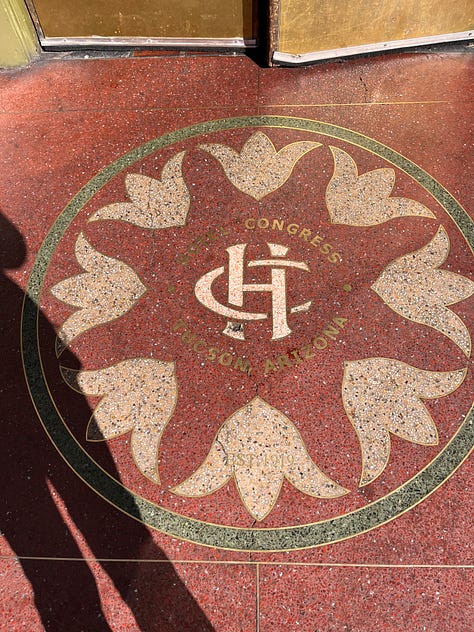





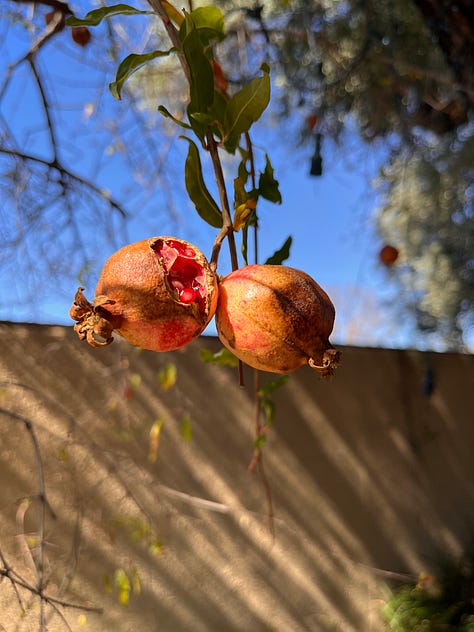


At the botanical garden, I watched a hummingbird hover over the dense white hairs of the woolly jacket prickly pear, gathering these in her long beak before zipping off to weave them into a tiny, exquisite nest.
A gorgeous blue morpho butterfly alighted upon me like a whisper. Through the trees drifted a cascade of calls, from curve-billed thrasher, lesser goldfinch, verdin, Bewick’s wren.
In a classic maneuver, a greater roadrunner ran away from me — slipping out of sight beneath a bank of leafy shrubs to avoid my gaze.
I was the Coyote, the trickster in his story.
But I didn’t want to be.
I am grateful for each of these orange-colored encounters … and to have become myself a tiny fragment of the desert’s long story.
Near the end of the warmest recorded February in Minnesota, I woke to frigid temperatures and sparkle flowers on my windows.
But even 1,300 miles northeast of Tucson, the waxing sun is too strong now for ice to resist for long. The frost burned off by noon, and now, on Leap Day, temperatures have swung back into the 40s.
Out my window, I see once again a familiar, mountainless, low-chroma landscape of browns and grays. This water-rich land holds many beauties, but they do not take the form of saguaros, organpipes, woolly jackets or chollas.
One cactus species is native to Minnesota, though, and that is the prickly pear, which does not need a desert in which to grow. Our prickly pears grow, at most, a foot tall. But in hugging the ground, they survive northern winters that are/were as fierce as southwestern summers.

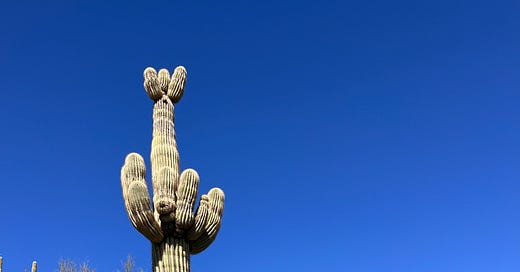




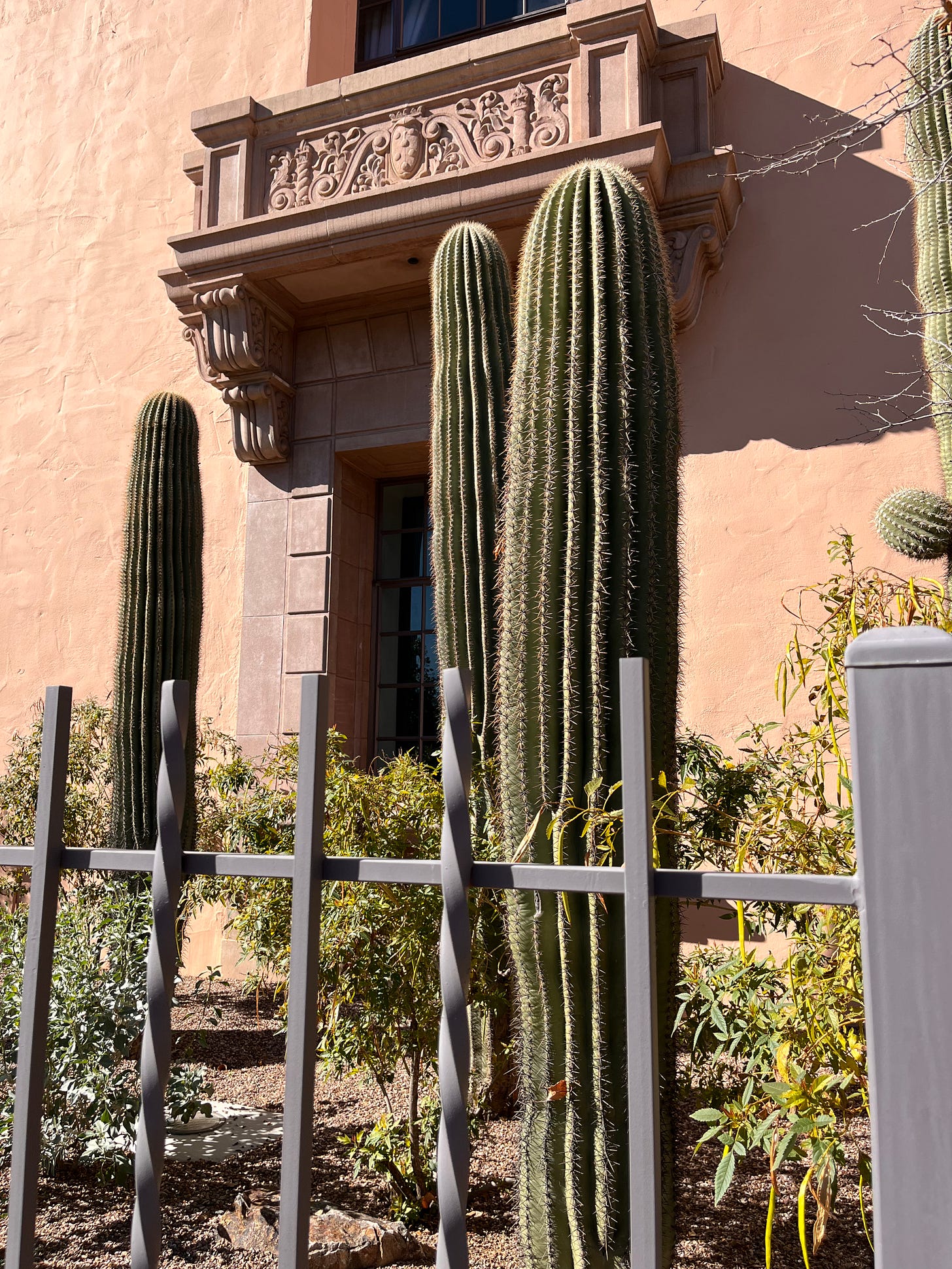




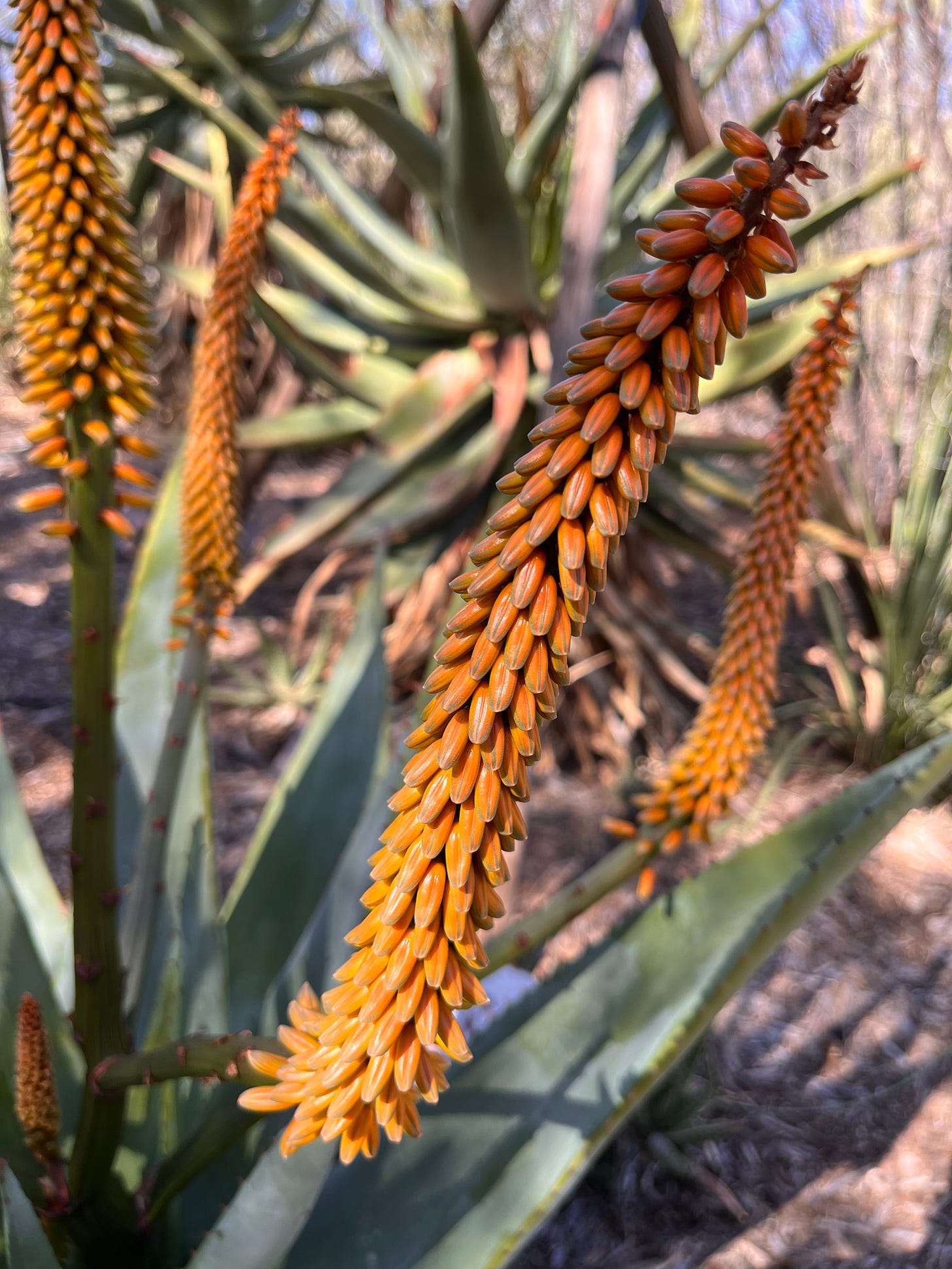
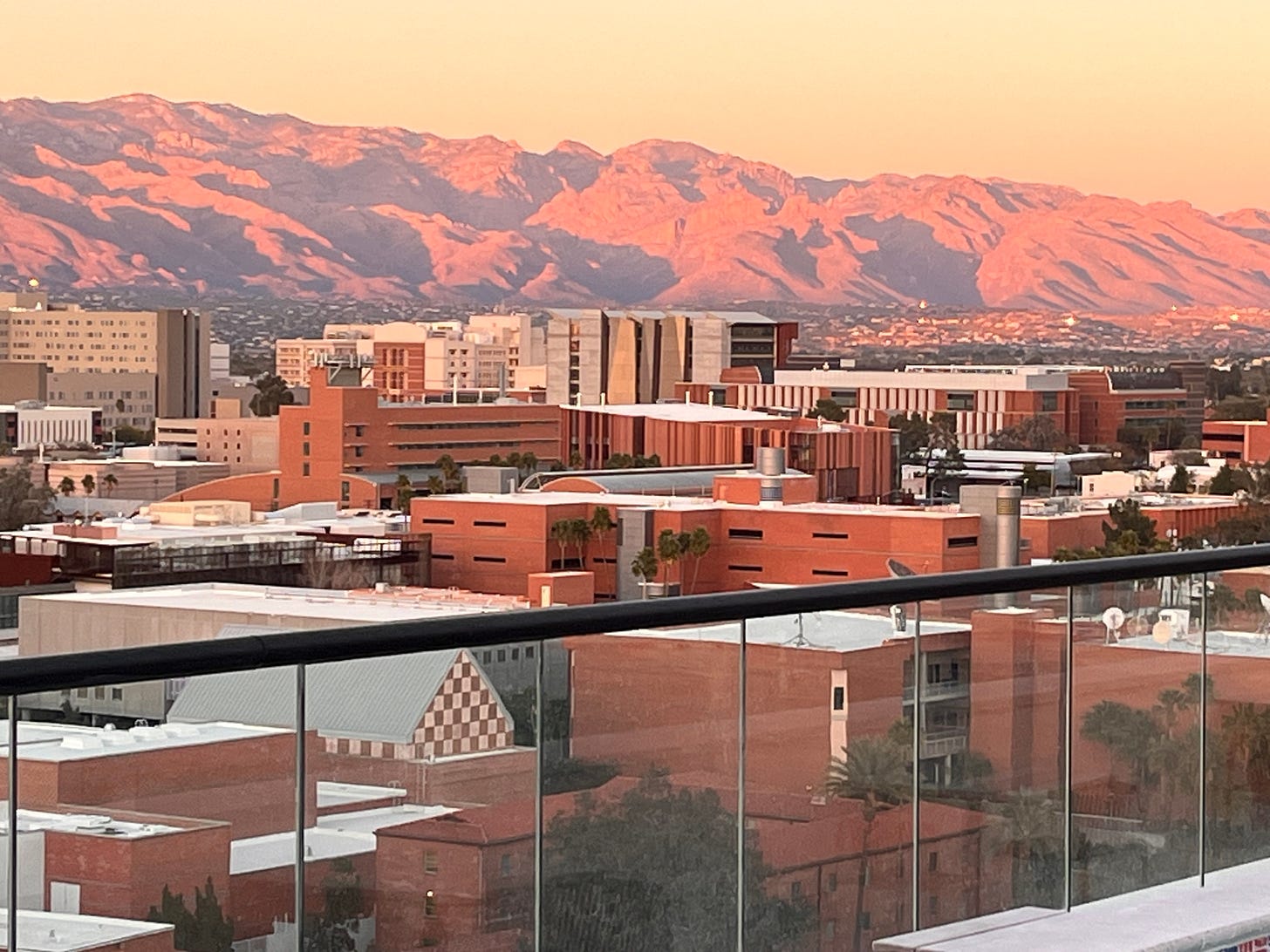

Yay! So glad you got a chance to visit this special place. It was a treat to read your description of the Sonoran’s shapes, textures, and colors. (All the orange stood out to me too!) It does feel unhurried here. It feels similar to Mexico in that way to me. I’ll be checking out a few of those desert authors - thank you!
These are such thrilling scenes! The saguaros, especially. I think your ARE a dryad.